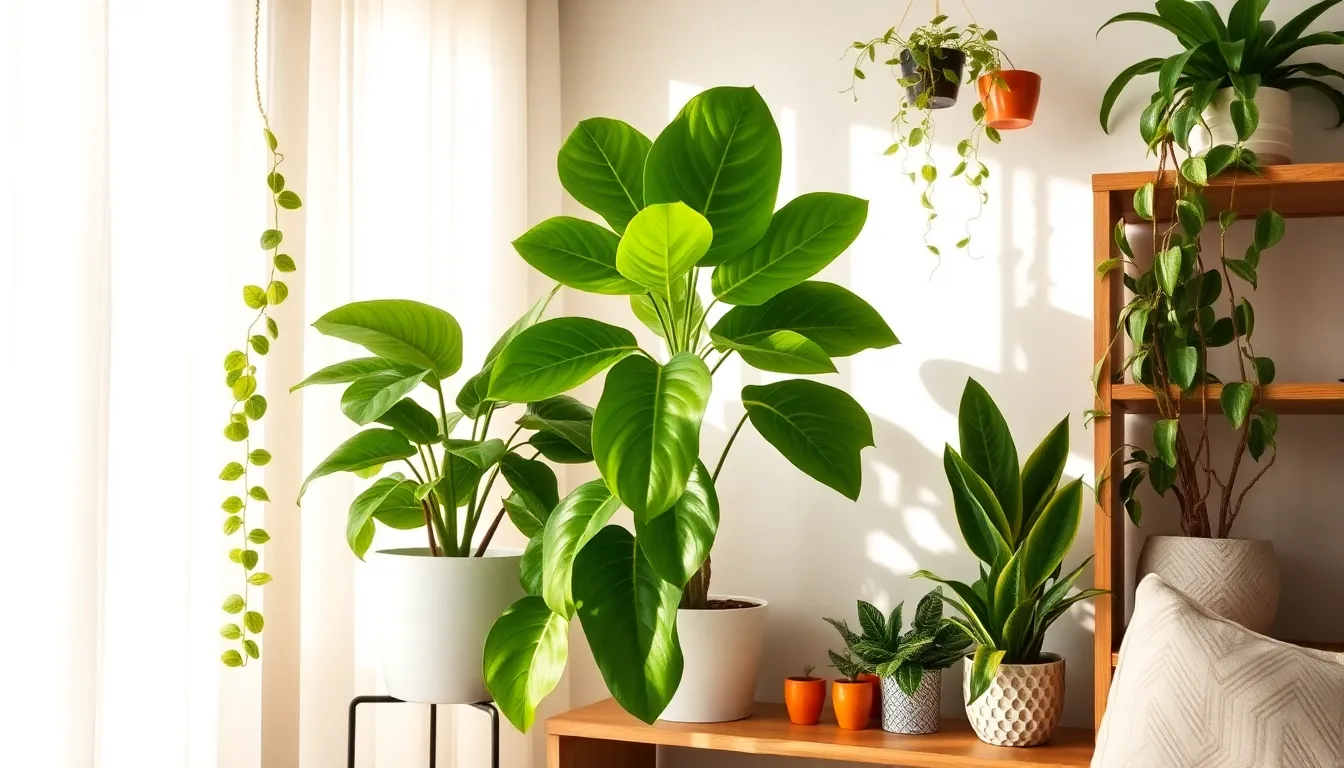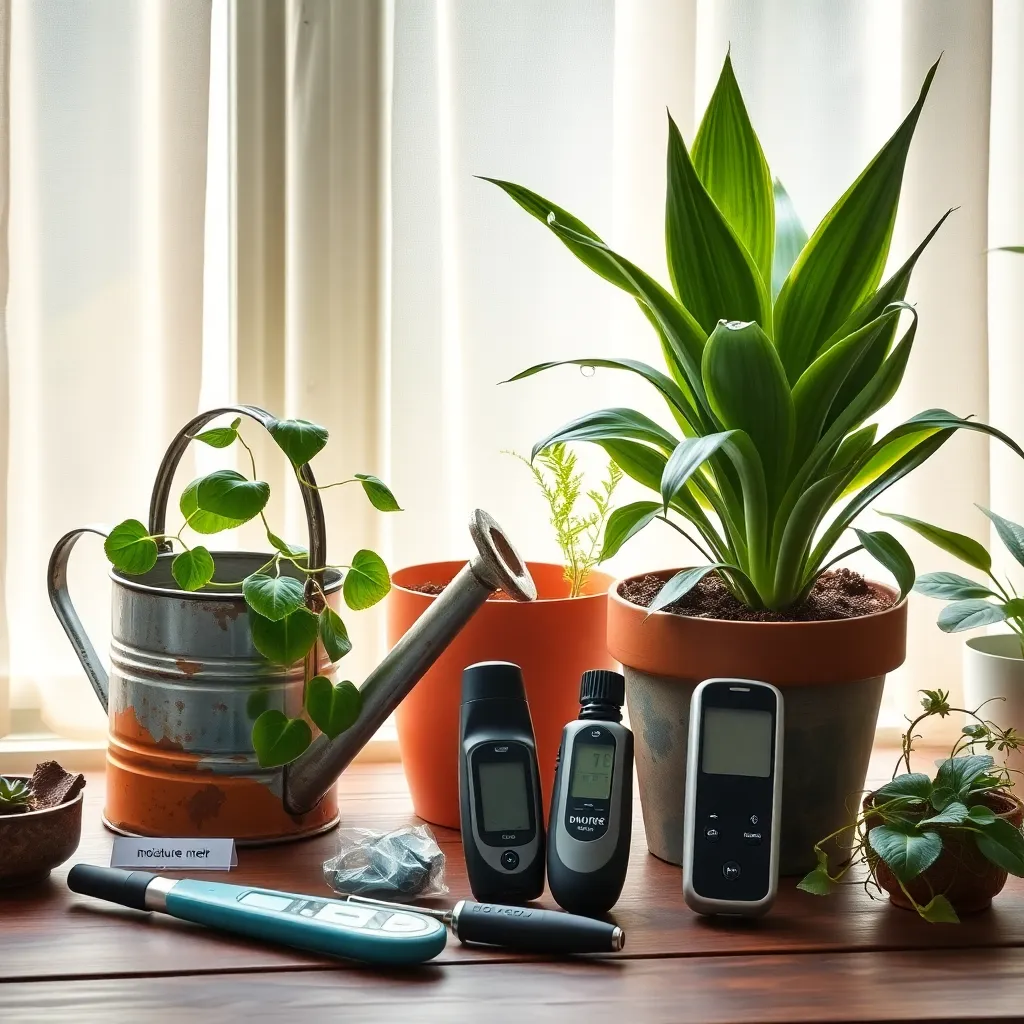Transforming a small space into a lush oasis of greenery is both an art and a joy that welcomes everyone, from novices with a newfound love for plants to seasoned gardeners with a penchant for nurturing life. The delightful world of houseplants offers a myriad of options that can thrive even in the coziest corners of your home, proving that size is no barrier to the benefits of indoor gardening.
Whether you’re looking to add a touch of nature to your compact apartment or seeking to enhance the ambiance of your home office, this guide to 13 beautiful houseplants tailored for small spaces will illuminate your path. You’ll discover plants that not only fit snugly into limited areas but also bring a breath of fresh air and a splash of life to your environment.
As you journey through these pages, you’ll learn how to select the perfect plant companions that match your lifestyle and space limitations, ensuring that your green friends flourish with minimal fuss. Together, we’ll explore the unique characteristics and care tips for each plant, empowering you to create an inviting indoor garden that feels both accessible and rewarding.
Choosing Space-Saving Greenery

When choosing houseplants for small spaces, consider those that grow vertically rather than horizontally. Plants like snake plants and ZZ plants make excellent choices as they grow upwards and require minimal floor space.
Another approach is to select plants that can thrive in hanging planters. Both spider plants and philodendrons are perfect candidates, as they not only save space but also add a cascading greenery effect.
To maximize your space, consider plants that can thrive in low-light conditions, as they allow for more flexible placement. Pothos and peace lilies are ideal for this purpose, as they adapt well to less sunny spots and still thrive beautifully.
Additionally, pay attention to the potting soil and watering needs to ensure healthy growth. Use a well-draining potting mix and water when the top inch of soil feels dry to the touch, typically every 1-2 weeks depending on your plant’s needs.
Low-Light Tolerant Varieties
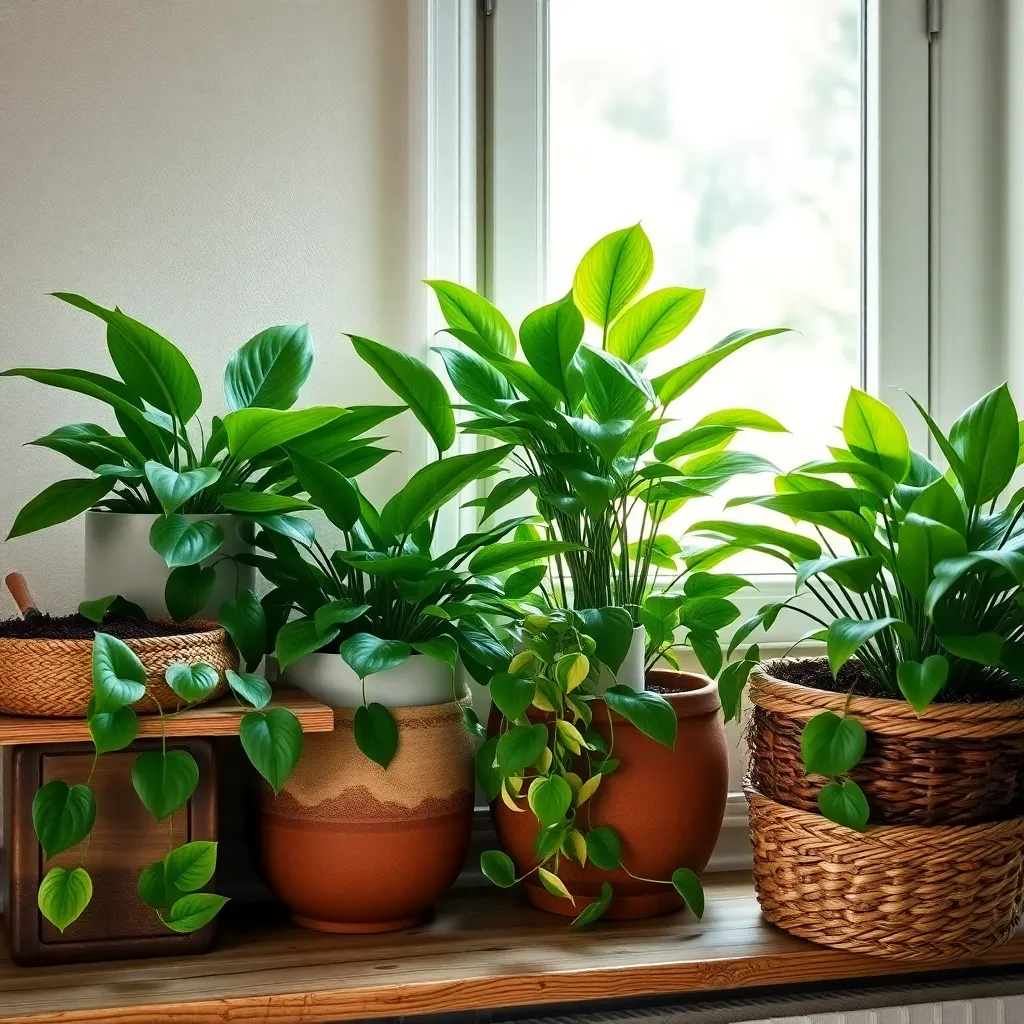
For those tight on space but still eager to add greenery, low-light tolerant plants are a fantastic choice. These plants thrive in conditions where sunlight is limited, making them perfect for small apartments or rooms without large windows.
One excellent option is the Snake Plant, known for its resilience and air-purifying qualities. It requires minimal attention, thriving with watering only when the soil is dry, and can flourish in a variety of soil types, though a well-draining potting mix is ideal.
The ZZ Plant is another superb choice, known for its glossy, dark green leaves. It handles neglect well, needing water only once every couple of weeks, and can adapt to indirect light, making it suitable for spaces with limited natural light.
For a splash of color, consider the Chinese Evergreen, which offers stunning variegated leaves. This plant prefers a peat-based soil mixture and should be watered moderately, allowing the top inch of soil to dry out between waterings.
Avoid overwatering these low-light champions to prevent root rot, a common issue in low-light environments. Remember to dust the leaves occasionally to allow the plants to photosynthesize efficiently, ensuring they remain healthy and vibrant in your space.
Pet-Friendly Plant Options

One of the best pet-friendly houseplants is the Spider Plant, known for its air-purifying properties and ease of care. It thrives in well-draining soil and prefers indirect light, making it ideal for small spaces.
To keep your Spider Plant healthy, water it moderately, allowing the top inch of soil to dry out between waterings. Overwatering can lead to root rot, so ensure your pot has adequate drainage.
Another excellent option is the Boston Fern, which adds lush greenery without posing a threat to curious pets. This plant loves humidity, so misting it regularly or placing it near a humidifier can boost its growth.
Boston Ferns flourish in indirect light and should be kept in a cool environment. Fertilize them monthly during the growing season with a balanced liquid fertilizer for optimal health.
Consider the Areca Palm, a pet-friendly plant that can brighten any room with its feathery fronds. It prefers bright, indirect light and requires a bit more space to spread its elegant leaves.
Ensure the Areca Palm’s soil stays moist but not waterlogged by watering it when the top inch feels dry. During the growing season, feed it bi-weekly with a diluted liquid fertilizer to encourage lush growth.
Air-Purifying Houseplant Choices
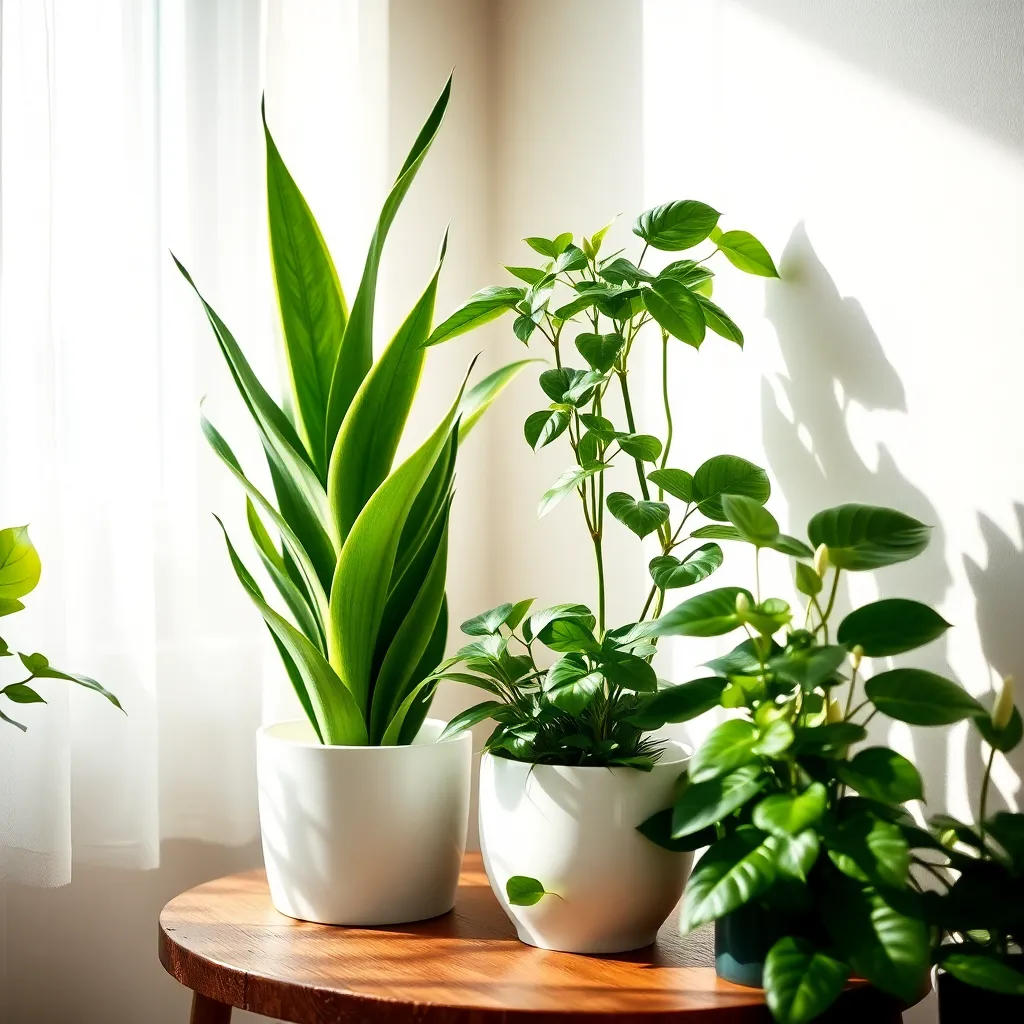
For those looking to improve their indoor air quality, certain houseplants can be an excellent choice. One such plant is the Spider Plant, which is known for its ability to filter toxins like formaldehyde and xylene from the air.
This plant is particularly easy to care for, making it ideal for beginners. It thrives in bright, indirect light and requires watering only when the top inch of soil feels dry.
Another great option is the Peace Lily, which not only purifies the air but also adds a touch of elegance to any room. To keep a Peace Lily healthy, place it in a well-draining potting mix and water it regularly, ensuring the soil remains moist but not soggy.
For more advanced gardeners, the Boston Fern can be a rewarding challenge. This plant prefers high humidity and indirect light, making a bathroom or a kitchen window an ideal location.
To maintain optimal humidity levels for your Boston Fern, consider placing a small humidifier nearby or mist it regularly. Additionally, feed it with a balanced liquid fertilizer every month during the growing season to encourage lush growth.
Succulents for Small Spaces

Succulents are an excellent choice for small spaces due to their compact size and low maintenance requirements. These plants thrive in sunny spots, so place them near a window that receives plenty of light to ensure healthy growth.
To keep your succulents thriving, use a potting mix specifically designed for cacti and succulents, as it provides excellent drainage. Overwatering is a common mistake, so allow the soil to dry out completely between waterings to prevent root rot.
Beginners will find succulents forgiving, while experienced gardeners can experiment with propagation. Simply snip a leaf, let it callous over for a few days, and place it on well-draining soil to grow a new plant.
If you’re looking to add variety, consider species like Echeveria or Haworthia, which are both visually striking and easy to care for. These plants require minimal fertilization, typically once in the spring with a diluted cactus fertilizer, to maintain their vibrant appearance.
Vertical Gardening Solutions
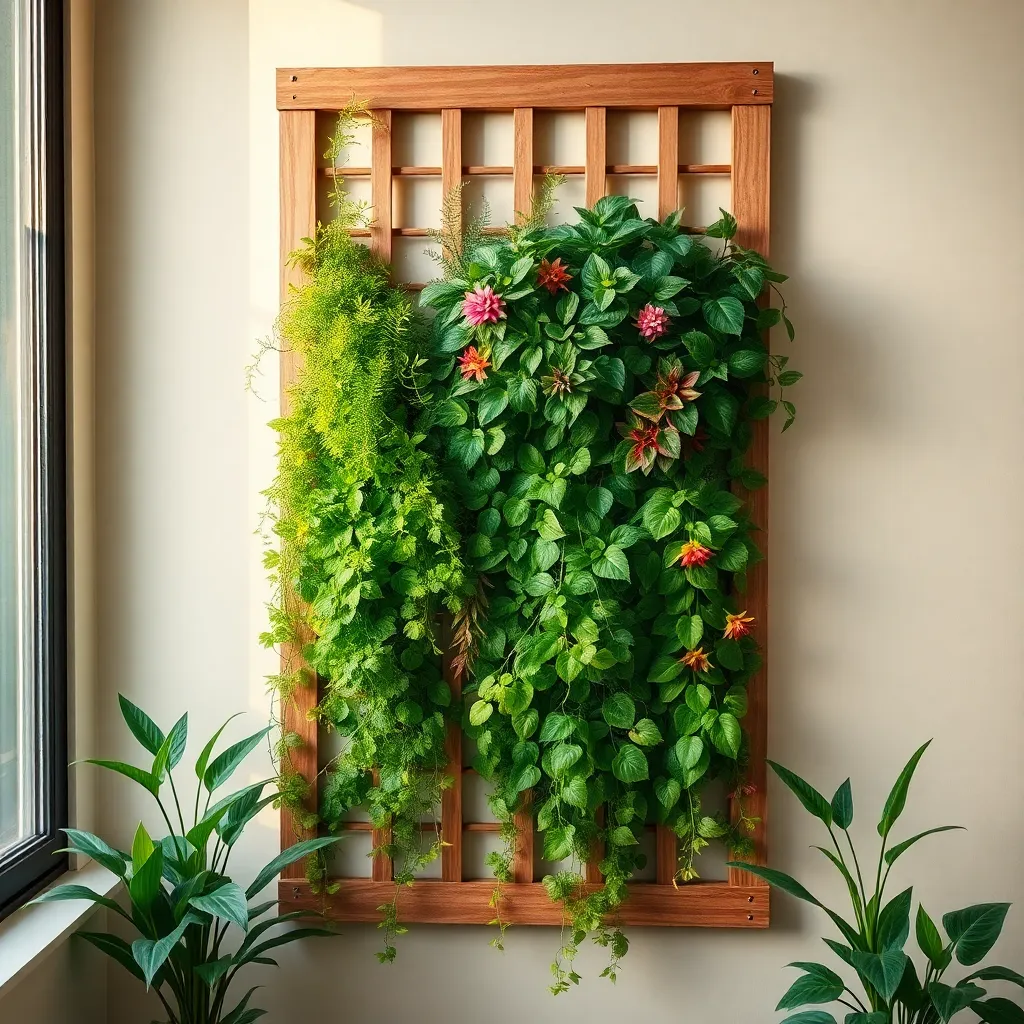
Vertical gardening is an excellent solution for making the most of small spaces. By growing plants vertically, you can create a lush, green environment even in the tiniest of areas.
Start by selecting plants that naturally grow upward, such as pothos or ivy, which thrive in vertical gardens. These plants are not only easy to care for but also require minimal soil, making them perfect for vertical setups.
To begin your vertical garden, choose a wall or fence that receives adequate light. Most houseplants thrive in bright, indirect sunlight, so ensure your location provides this condition.
Use sturdy materials like wooden pallets, hanging pots, or wall-mounted planters to create your vertical structure. Ensure they are securely fastened to prevent accidents and make watering and maintenance easier.
Watering is crucial in vertical gardening, as plants may dry out faster due to gravity. Consider using a drip irrigation system or self-watering planters to keep your plants hydrated without constant attention.
For those ready to tackle advanced techniques, try incorporating a hydroponic system into your vertical garden. This system allows plants to grow without soil, optimizing space and providing nutrients directly to the roots.
Remember, the key to successful vertical gardening is experimenting with different plant combinations and arrangements. With a little creativity and the right care, your vertical garden can become a stunning focal point in your home.
Miniature Ferns and Mosses

Miniature ferns and mosses are perfect for adding a touch of greenery to small spaces. Their compact size and varied textures create an enchanting, lush environment anywhere indoors.
The key to keeping miniature ferns thriving is to maintain a humid environment. Misting them lightly once or twice a week can help replicate their natural habitat.
When it comes to soil, ferns prefer a well-draining mix rich in organic matter. Consider using a potting mix specifically designed for ferns, or combine peat moss and perlite for an ideal blend.
Mosses, on the other hand, thrive in consistently damp conditions, making them an excellent choice for terrariums. Place them in a shallow container with a layer of pebbles and charcoal beneath the soil to ensure proper drainage.
Indirect light is best for both ferns and mosses, as direct sunlight can scorch their delicate foliage. Position them near a north or east-facing window to provide the gentle light they need.
For advanced gardeners, try propagating ferns using their spores. This can be a rewarding challenge and adds an extra element of sustainability to your gardening practice.
Trailing Plants for Height
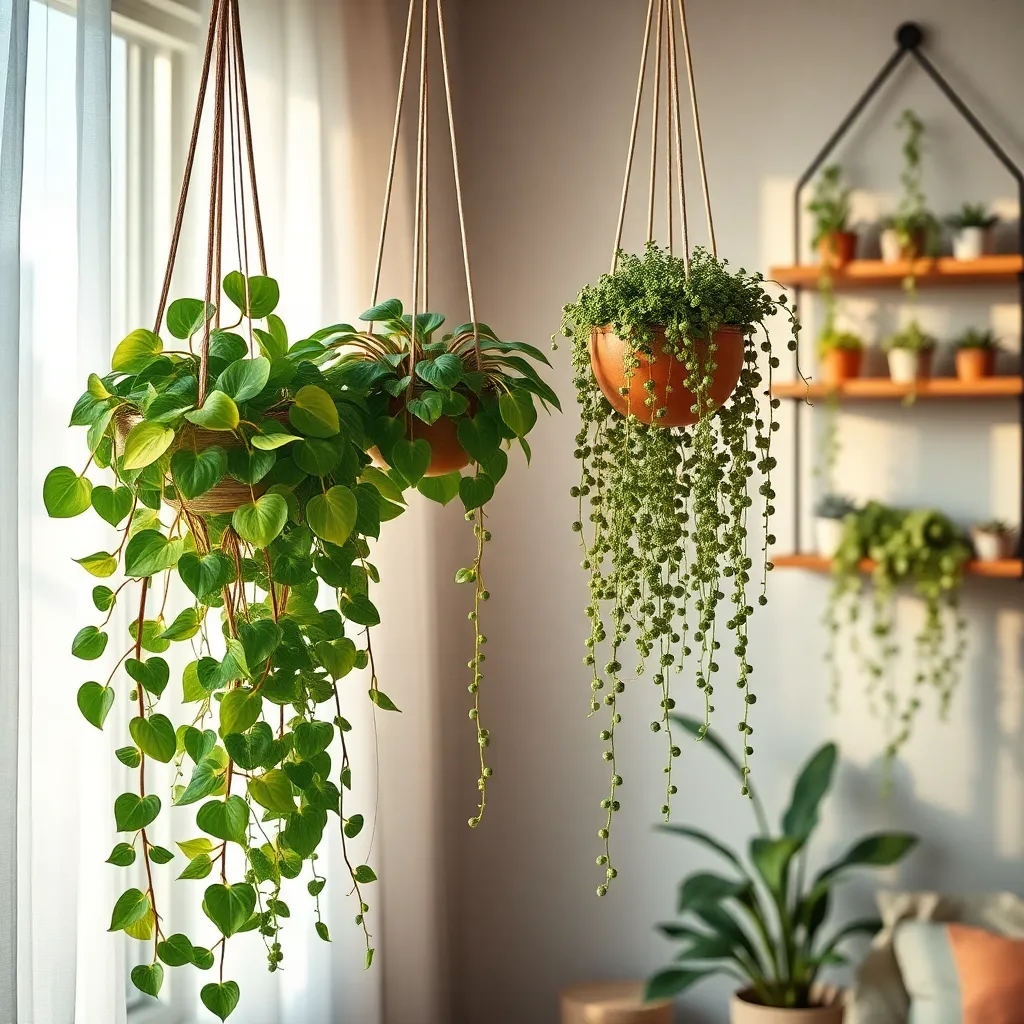
Trailing plants offer a creative solution for adding vertical interest to small spaces without taking up much room. By training these plants to climb upward, you can make the most of available vertical space and create a lush, green environment.
Consider the classic pothos, which is both beginner-friendly and versatile in its growing habits. For optimal growth, place pothos in a location with indirect sunlight and use a well-draining soil mix.
Water pothos when the top inch of soil feels dry, but avoid overwatering, which can lead to root rot. You can encourage more bushy growth by pinching back the stems periodically.
For more advanced gardeners, try the elegant string of pearls, known for its unique, cascading bead-like foliage. Provide bright, indirect light and use a cactus mix or a well-draining potting soil to mimic its natural arid environment.
Water string of pearls sparingly, allowing the soil to dry out completely between waterings, as they are sensitive to overwatering. To maintain their shape and encourage fullness, occasionally trim back the stems and propagate any cuttings.
Lastly, the heartleaf philodendron is another excellent choice for trailing plants, thriving in a variety of light conditions. It can tolerate low light, but its growth will be more vigorous in brighter conditions.
Keep the soil consistently moist but not waterlogged, and fertilize monthly during the growing season with a balanced houseplant fertilizer. For best results, support the trailing vines with a trellis or let them drape naturally for a relaxed look.
Compact Flowering Beauties
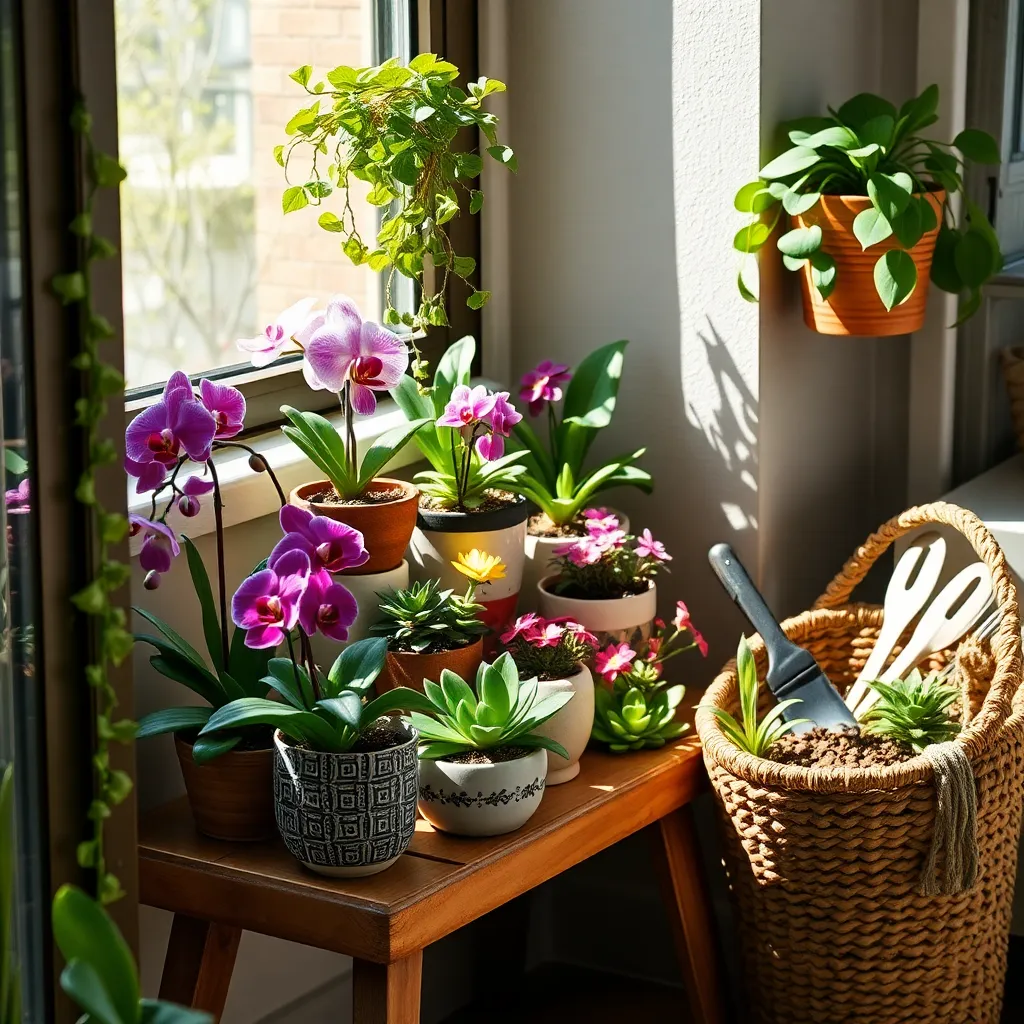
Compact flowering plants are perfect for adding a splash of color to small spaces without overwhelming them. Begonias are a great choice, thriving in indirect sunlight and requiring well-draining soil to prevent root rot.
To care for Begonias, water them when the top inch of soil feels dry, ensuring not to overwater. For more advanced gardeners, consider propagating Begonias from leaf cuttings to expand your collection effortlessly.
African Violets are another compact option, known for their vibrant blooms that can brighten any corner. They thrive in a mix of peat moss and perlite, which provides the perfect balance of moisture retention and aeration.
Keep African Violets happy by maintaining a consistent watering schedule, using room temperature water to avoid damage. An occasional dose of diluted liquid fertilizer can promote more vigorous growth and blooming.
For those seeking a low-maintenance option, Kalanchoe is a fantastic choice, with its ability to store water in its leaves. This succulent prefers bright, indirect light and only needs watering every couple of weeks.
During its blooming season, Kalanchoe benefits from a well-balanced fertilizer every month to encourage prolonged flowering. Experienced gardeners can experiment with manipulating light exposure to induce blooming cycles throughout the year.
Low-Maintenance Indoor Plants
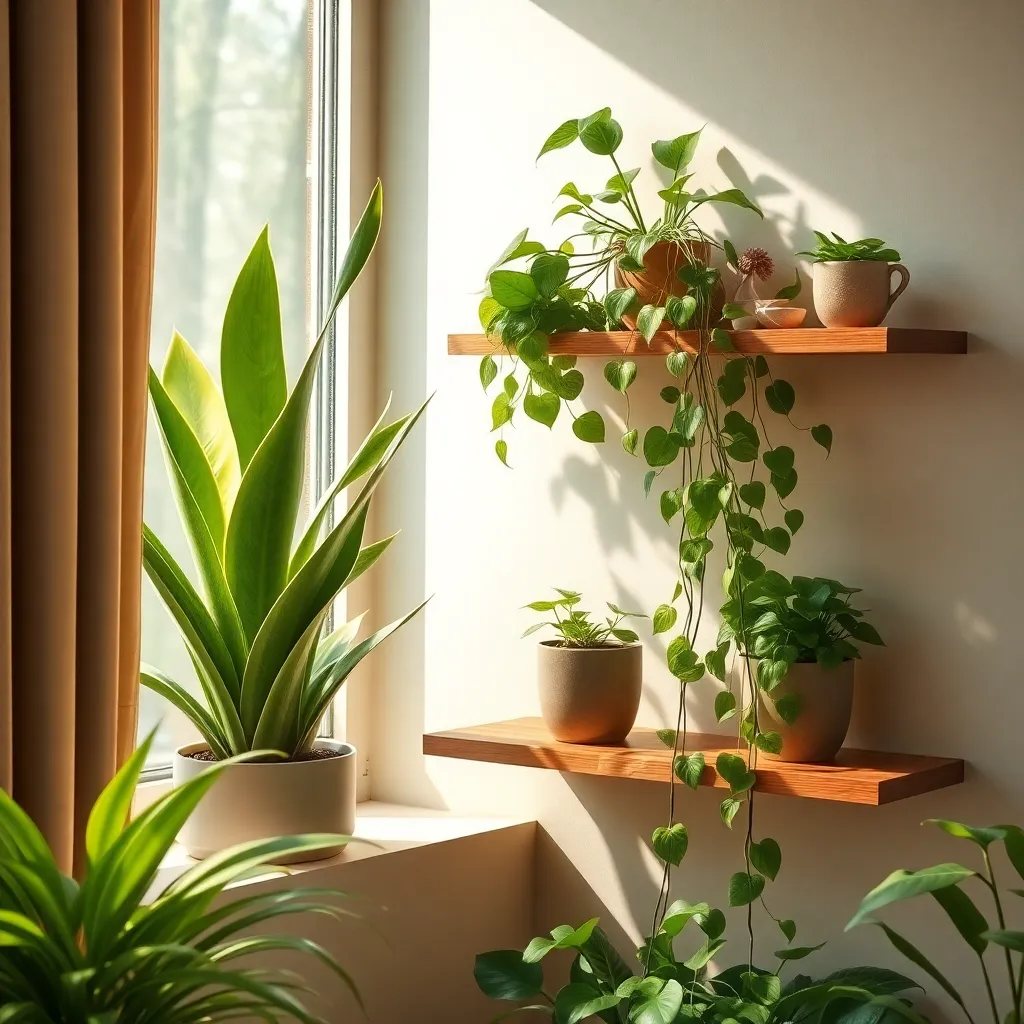
For those seeking greenery without the fuss, low-maintenance indoor plants are an excellent choice. Snake plants, known for their hardiness, thrive in a variety of light conditions and require infrequent watering, making them perfect for beginners.
To ensure your snake plant thrives, use a well-draining potting mix, such as a cactus blend. Water sparingly, allowing the soil to dry completely between waterings, which typically means once every two to three weeks.
Another excellent option is the ZZ plant, renowned for its tolerance to neglect and low-light environments. This plant prefers indirect sunlight and can survive on minimal watering, making it ideal for those with busy schedules.
When caring for a ZZ plant, place it in a spot with indirect light, such as a north-facing window. Fertilize only once or twice a year with a balanced houseplant fertilizer to maintain its lush green foliage.
Pothos is another easy-care plant that adds a touch of elegance to any small space. Its trailing vines thrive with minimal attention, requiring only occasional watering when the top inch of soil feels dry.
For optimal growth, place pothos in bright, indirect light, though it can also tolerate low-light conditions. Prune regularly to encourage bushier growth and propagate from cuttings to expand your collection effortlessly.
Creative Plant Display Ideas
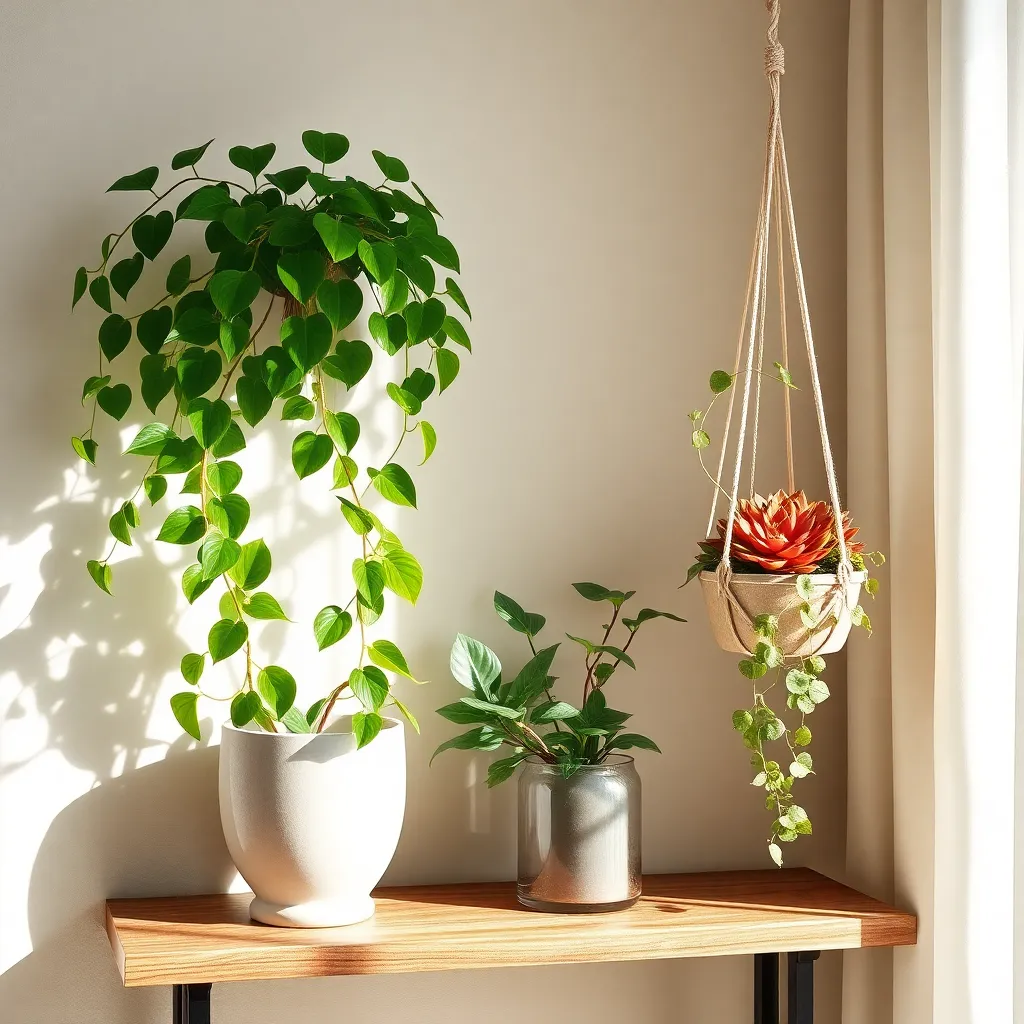
Creating a stunning plant display in small spaces can transform any room into a vibrant oasis. To start, consider using vertical space by hanging plants at varying heights, which adds dimension without taking up floor space.
For a cohesive look, group plants with similar light and water requirements. This not only simplifies care but also creates a harmonious display that will thrive together.
Experiment with different container styles to add personality to your plant displays. Choose from colorful ceramic pots, sleek metal planters, or even repurposed items like jars and baskets for a unique touch.
Advanced gardeners might enjoy experimenting with living walls, which are perfect for small spaces. These vertical gardens allow you to grow numerous plants in a small area by stacking planters or using specially designed wall systems.
DIY Indoor Plant Terrariums
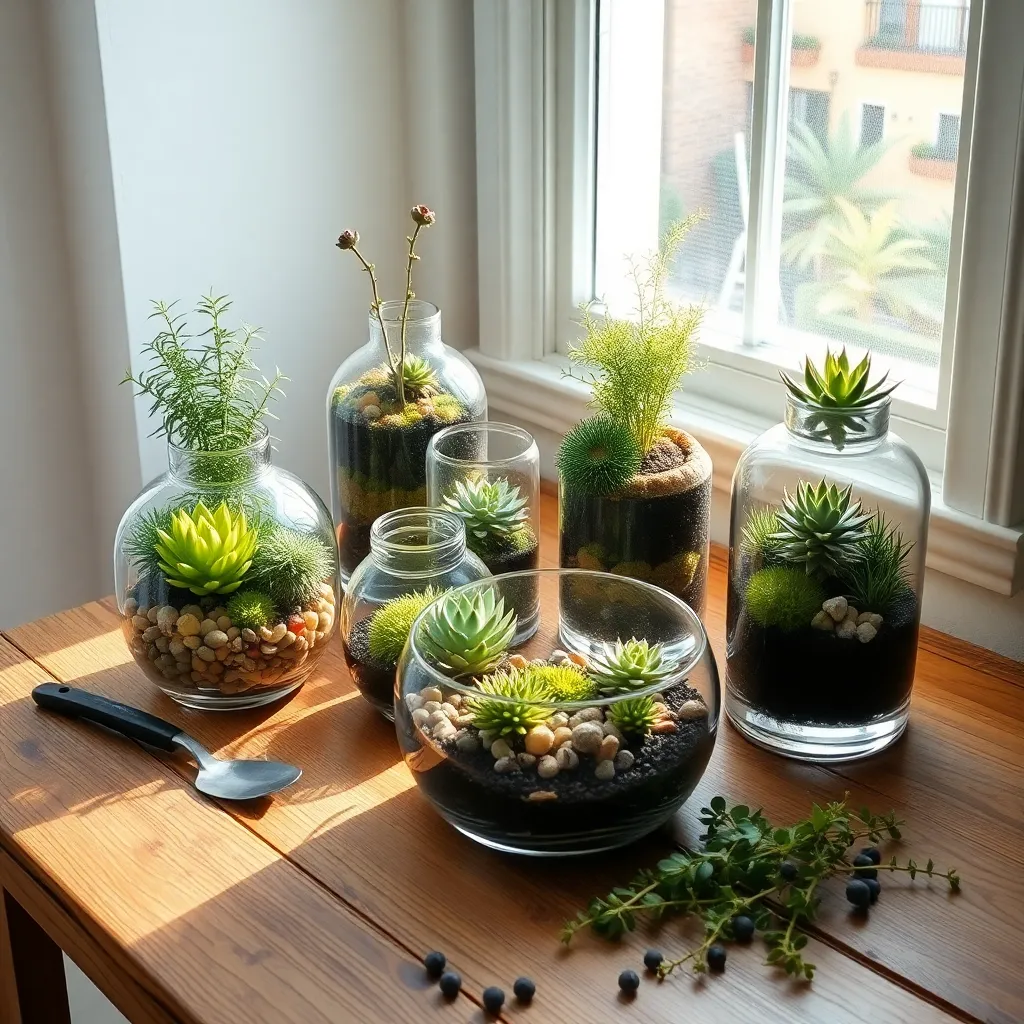
Creating a DIY indoor plant terrarium is a great way to bring nature’s beauty into your home while saving space. Start by selecting a glass container that suits your style—anything from a simple jar to an intricate glass dome can work.
It is essential to choose the right plants for your terrarium to thrive. Opt for slow-growing, humidity-loving plants such as ferns, mosses, or small succulents, as they thrive in the enclosed environment of a terrarium.
Begin by adding a layer of small stones or pebbles at the bottom of your container to help with drainage. Next, add a layer of activated charcoal to keep the environment fresh and prevent mold growth, followed by a layer of potting soil suitable for your chosen plants.
When arranging your plants, ensure each one has enough space, and gently pat the soil down to secure them in place. Water your terrarium sparingly; a light misting every two to three weeks is usually sufficient, as the enclosed environment retains moisture well.
For advanced gardeners, consider adding decorative elements like colored sand or miniature figurines to personalize your terrarium. Remember to periodically check for dead leaves or overgrowth to maintain the health and aesthetics of your indoor oasis.
Caring for Small Space Plants
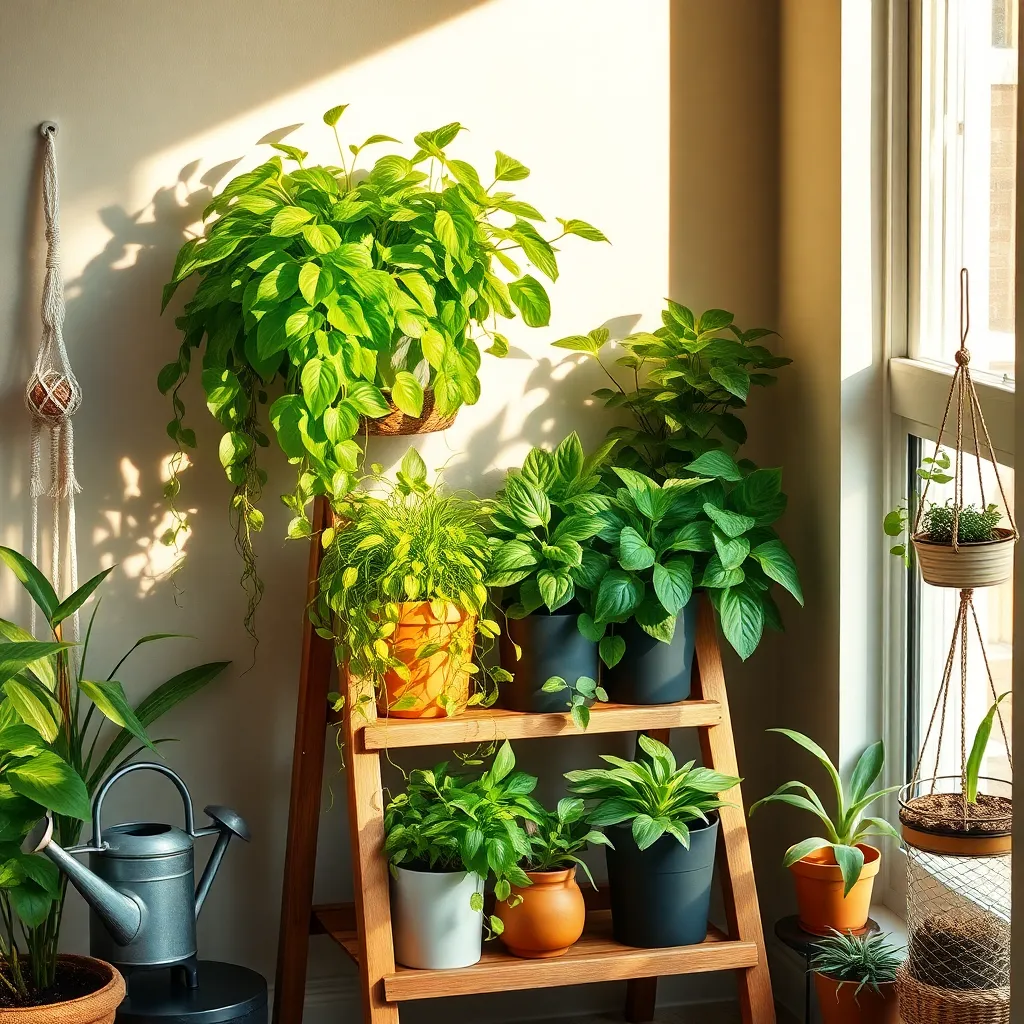
Small space plants thrive when given the right environment and care. It’s essential to match your plant choices with the available light in your space to ensure they flourish. Bright indirect light is ideal for many small houseplants, so consider placing them near east or north-facing windows. If natural light is limited, investing in a quality grow light can make a significant difference.
Watering is a critical aspect of plant care, especially in small spaces where humidity levels can vary. A good rule of thumb is to check the top inch of soil for dryness before watering. Overwatering is a common issue that can lead to root rot, so ensure pots have adequate drainage holes. Using a well-draining potting mix is key; consider mixes that contain perlite or sand to improve aeration.
Fertilizing small space plants can keep them healthy and promote growth. Use a balanced liquid fertilizer diluted to half strength during the growing season, typically spring and summer. Be cautious not to over-fertilize, as this can lead to salt accumulation in the soil. Adjust feeding frequency based on plant growth and appearance, reducing or halting it during the plant’s dormant period.
Advanced care involves understanding the specific needs of each plant species. For instance, succulents prefer a gritty mix and less frequent watering compared to tropical plants like ferns. Grouping plants with similar needs can simplify care routines and enhance their microclimate. Experimenting with humidity trays or pebble trays can also benefit humidity-loving plants, helping them to thrive in drier indoor environments.
Conclusion: Growing Success with These Plants
In exploring the ’13 Beautiful Houseplants for Small Spaces,’ we’ve uncovered how nurturing relationships can thrive in even the coziest of environments. From understanding the importance of space (or lack thereof) in a relationship to recognizing that growth requires patience and care, each plant symbolizes a unique relationship concept. Concepts such as adaptability, like the resilient succulents, and the need for consistent communication, akin to the attention a fern demands, are vital. Just as the peace lily reminds us of tranquility, relationships flourish when we cultivate peace and understanding.
Now, let’s take immediate action: choose one plant that symbolizes an aspect of your relationship you wish to nurture. Place it in your home as a living reminder of your commitment to growth and connection.
Remember to save or bookmark this article for future reference; it’s a handy guide for when you need a dose of inspiration or a gentle reminder of your relationship goals. As you journey forward, know that with intention and care, your relationships can blossom beautifully, regardless of the space they occupy. Embrace the growth, and watch your connections flourish!

